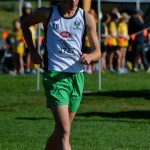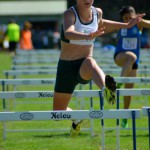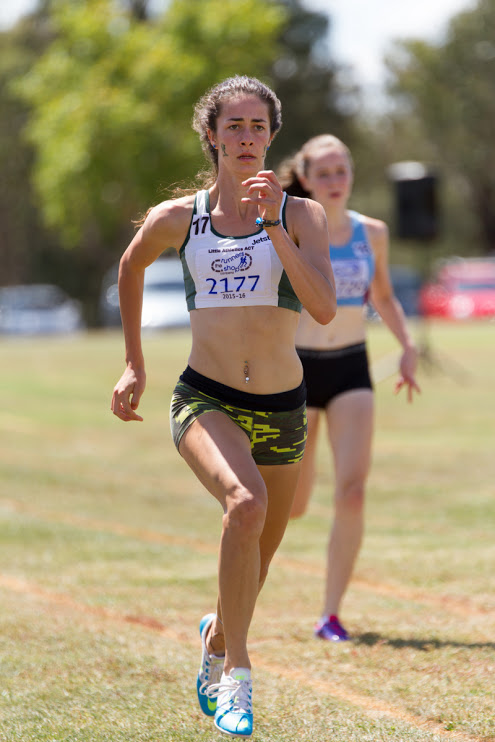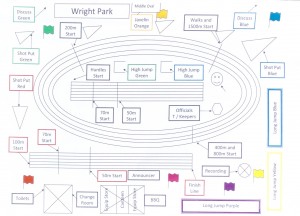Track Events
Track events take precedence over field events: e.g. if an age group is at long jump when their race is called, they must leave long jump and marshal for their race. At the end of the race, athletes are then to return to their long jump event.Track events encompass all running events plus hurdles and race walk. For track events, the Age Group Manager will sort the athletes into lanes for the start of each race. Where numbers in an age group are small, boys and girls may compete in the same track event or age groups may be combined (provided the events specifications are the same).
A starter gun is used to commence the race. A false start is signalled by two shots in quick succession. At LAACT competitions, an athlete is only allowed one false start; however, at QLAC athletes will be allowed more than one false start at the discretion of the Starter.
The LAACT has a series of fact sheets for events that provide specific information for each event type.
In recognition that younger athletes who qualify for NSW school based athletics championships must use blocks, younger athletes at QLAC may use starting blocks if they also attend QLAC-arranged training sessions to obtain their block licence.
While timekeeping may seem a scary task, it’s not, and it provides a great opportunity to be up close to the athletes, encouraging them to achieve their personal best. Training on the use of the stopwatches and writing out the tickets will be provided each competition day.
At QLAC, each timekeeper is given a placegetter to time. For example, you may be asked to time the 3rd athlete over the line for each race. The Chief Time Keeper times all athletes (called multi-timing) so can provide a time if for some reason you miss the start or finish of the race. Timing commences when you see the smoke from the gun not when you hear the bang. Press Stop when the torso of the athlete you are timing crosses the finish line. Keep your eyes on your athlete so that you can write down their registration number on the ticket. After all athletes have completed the race, the athletes are to return to the finish line and be in the lane in which they ran. You then approach your place getter and provide them with a ticket to show their performance. For the younger athletes, remind them to take their ticket to their Age Manager. While the stopwatch will record the time to two (2) decimal places, we always round up, e.g. if the time is 12.41 or 12.48, the time to write on the ticket is 12.5. Only when the athlete records a time of 12.40 or lower will the recorded time be 12.4.
Race Walk
| Age | Distance |
| U9 | 700m Walk |
| U10 – U11 | 1100m Walk |
| U12 – U17 | 1500m Walk |
 Race walking is a progression of steps so taken that unbroken contact with the ground is maintained at all times, as judged by the human eye. There are two main rules: the Contact rule states that during the period of each step, the advancing foot of the walker (heel first) must make contact with the ground before the rear foot leaves the ground; and the Knee rule which states that the advancing leg shall be straightened (ie not bent at the knee) from the moment of first contact with the ground until it is in the vertical upright position (ie directly underneath the body). At QLAC we are fortunate to have official judges attending some competition days when the walks are on. These judged may caution competitors when they are in danger of failing to comply with the rules. Each judge may deliver a warning. At LAACT competitions, if three warnings are presented by the judges the athlete will be disqualified. At QLAC the judges are there to show the correct style and will slow the athlete down and let them continue rather than disqualifying them from the competition.
Race walking is a progression of steps so taken that unbroken contact with the ground is maintained at all times, as judged by the human eye. There are two main rules: the Contact rule states that during the period of each step, the advancing foot of the walker (heel first) must make contact with the ground before the rear foot leaves the ground; and the Knee rule which states that the advancing leg shall be straightened (ie not bent at the knee) from the moment of first contact with the ground until it is in the vertical upright position (ie directly underneath the body). At QLAC we are fortunate to have official judges attending some competition days when the walks are on. These judged may caution competitors when they are in danger of failing to comply with the rules. Each judge may deliver a warning. At LAACT competitions, if three warnings are presented by the judges the athlete will be disqualified. At QLAC the judges are there to show the correct style and will slow the athlete down and let them continue rather than disqualifying them from the competition.
Hurdles
The distance run and the number and height of the hurdles differs for each age group as follows:
| Little Athletics Australia Hurdle Specifications (U8 – U17) | ||||||
| AGE | DIST | HEIGHT | FLTS | START | BETWN | FINISH |
| U8, U9 | 60m | 45cm | 6 | 12.0m | 7.0m | 13.0m |
| U10, U11 | 60m | 60cm | 6 | 12.0m | 7.0m | 13.0m |
| U12 | 60m | 68cm | 6 | 12.0m | 7.0m | 13.0m |
| U13 | 80m | 76cm | 9 | 12.0m | 7.0m | 12.0m |
| U14 Girls | 80m | 76cm | 9 | 12.0m | 7.0m | 12.0m |
| U14 Boys | 90m | 76cm | 9 | 13.0m | 8.0m | 13.0m |
| U15, U17 Girls | 90m | 76cm | 9 | 13.0m | 8.0m | 13.0m |
| U15, U17 Boys | 100m | 76cm | 10 | 13.0m | 8.5m | 10.5m |
| U13 | 200m | 68cm | 5 | 20.0m | 35.0m | 40.0m |
| U14, U15, U17 | 200m | 76cm | 5 | 20.0m | 35.0m | 40.0m |

